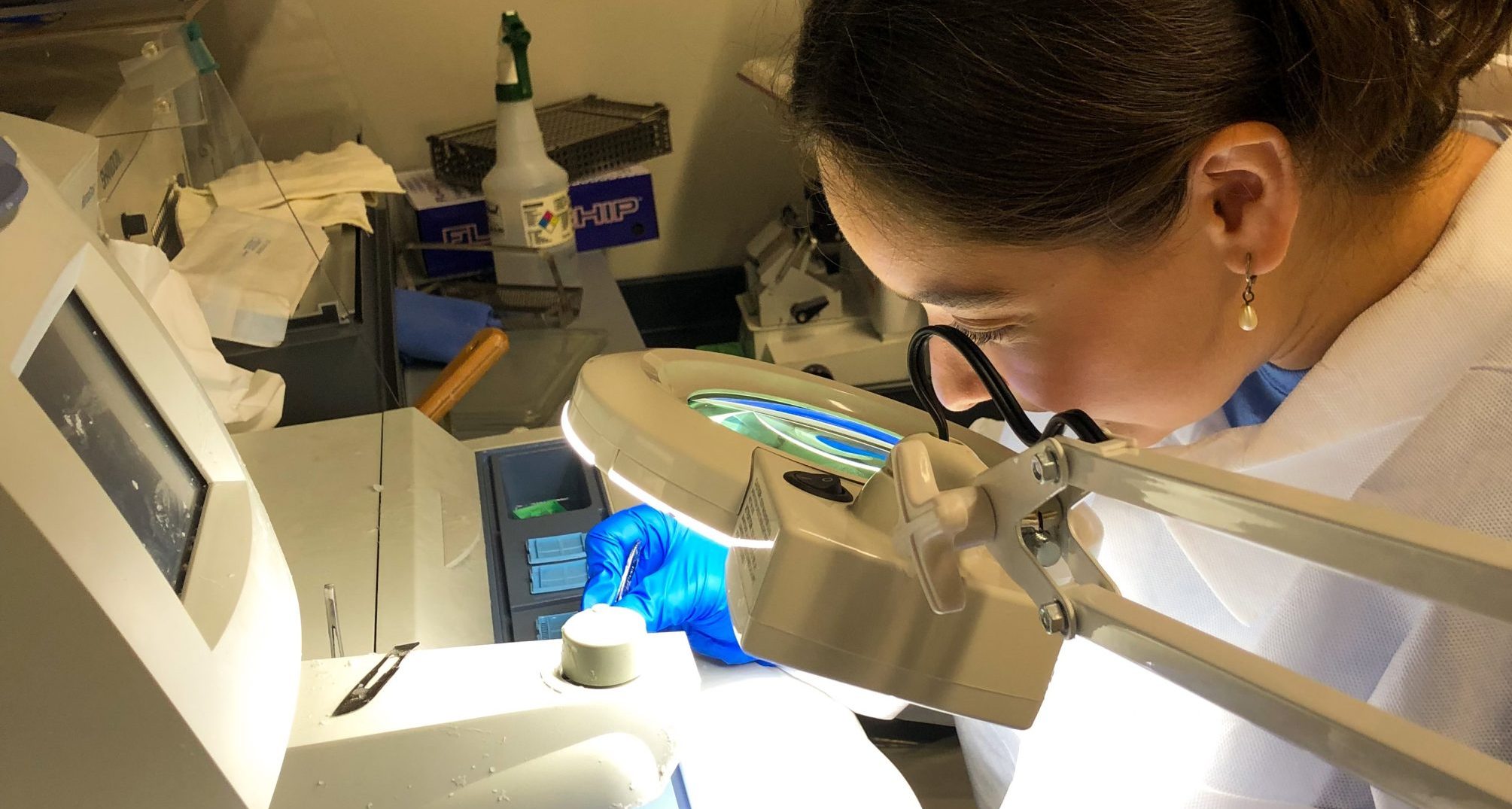
Fall 2024 CORE Voucher Recipients Share Their Efforts
UMaine graduate and undergraduate students who received CORE Voucher funding this semester took a moment to connect with us about their work. We asked them about their progress, and about any unexpected findings. Below, read about the variety of different projects that utilized CORE resources:
Amanda Ignacz, advised by Clarissa Henry
CORE Service: Freezer Program
“My project was to conduct second-site drug testing on a zebrafish model of Duchenne muscular dystrophy (DMD, a fatal, progressive muscle-wasting disease), to ensure reproducibility that a specific drug could improve disease outcomes for DMD. After administration of this drug, we expected improved muscle structure and motility, showing promise for moving to drug trials in human patients, which is the goal of this trial.
Using a sample size of over 400 zebrafish in both control and drug-administered groups, I was able to replicate the findings the home lab out of University of Washington found when they administered the drug at a higher dose. My findings of the drug at 1 uM administered to DMD mutant zebrafish were more similar to what Washington sees when administering 10 uM. That is to say, the drug appears to act stronger in my hands than in theirs. This shows the importance of dose and batch dependency when using this drug, and should be taken into account when moving to drug trials in human patients. My findings are expected to contribute to a paper publication being prepared by the Maves lab in the University of Washington, and I am expected to be on the author line for this.”
Kyle O’Neil, advised by Timothy Waring
CORE Service: IMRC Center Prototyping Laboratory
Kyle’s project was to create outreach and marketing materials on behalf of the Black Bear Exchange (BBE) clothing closet, as part of a service learning group for the course ECO 381.

“We used the funds to print outreach materials, such as posters and flyers, and plan to conduct surveys before and after their posting to see if we have reached a broader audience with this information about these campus programs. As part of this outreach, we hope to organize a volunteer group.”
Over the semester, his team had to switch the scope of their plans from food insecurity outreach to clothing insecurity outreach, which was more consistent with the stakeholder’s needs. The team’s poster could be seen at the December campus blood drive.
Elle Duncombe-Mills, advised by Susan Smith
CORE Service: IMRC Center Prototyping Laboratory
“I am making a project about the misguided spiritual impulse, and it involves textile work as well as dozens of 3D-scanned and printed figures. I’m aiming to create an absurd diorama of a megachurch service.”
Elle’s lesson from her work on this project: “Stay open: your initial idea may lead you to a completely different outcome — don’t resist that if it happens. This project has been full of surprises.”
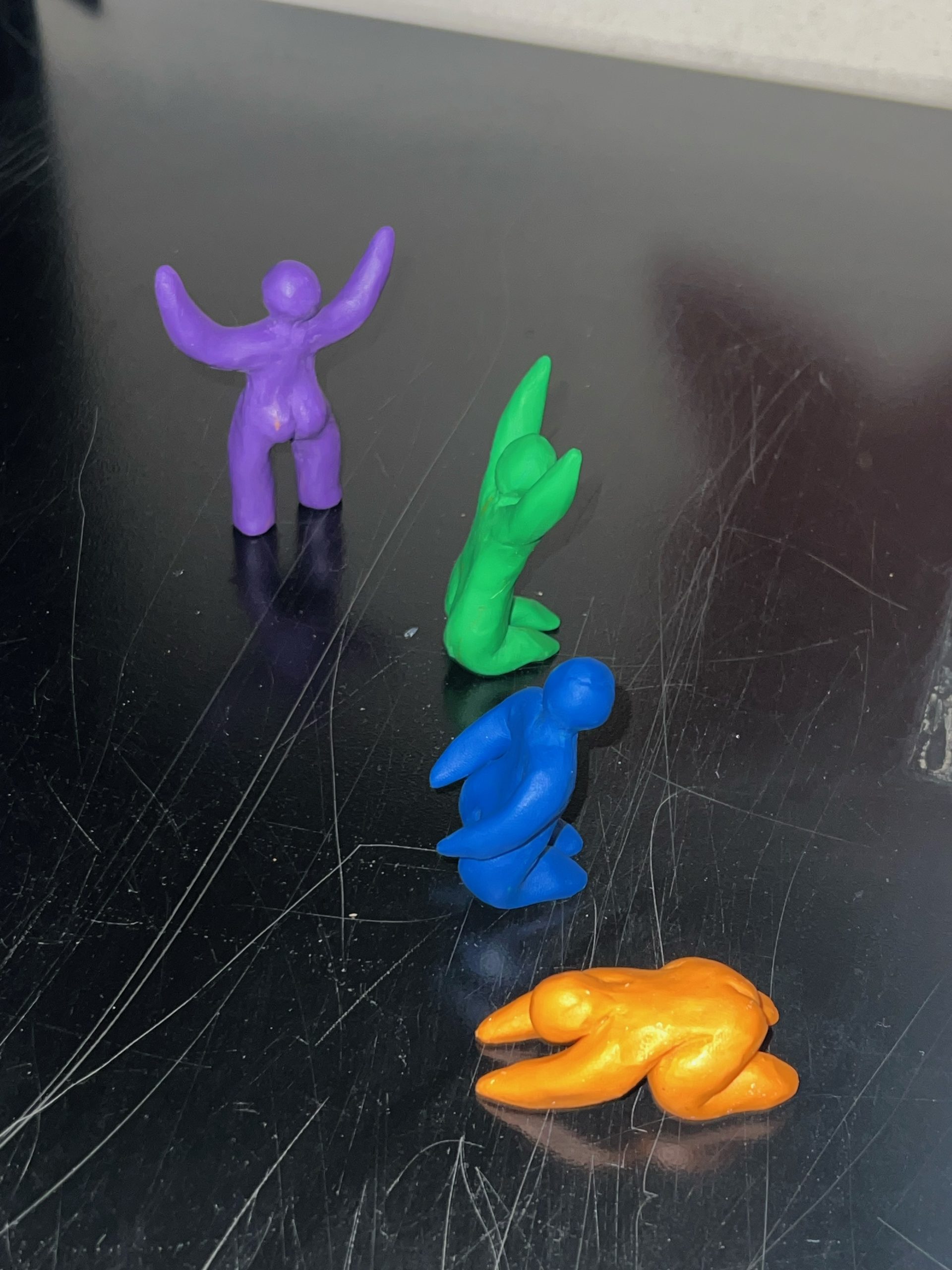
Fernanda Amaral Della Rosa, advised by Jennifer Perry
CORE Service: DNA Sequencing Center
“My study focuses on understanding microbiological indicators in the production processes of wild blueberries. These indicators are essential for assessing and maintaining the safety, quality, and shelf life of the fruit. By studying how these microorganisms interact with the production environment, I aim to identify potential risks and develop strategies to minimize contamination. This research not only supports the producers by improving processing standards, but also protects consumers by ensuring they receive a safe and high-quality product. Ultimately, it contributes to the sustainability and reputation of the wild blueberry industry.
Initially, we anticipated isolating STEC (Shiga toxin-producing E. coli). However, we were pleasantly surprised to confirm that this was not the case. This finding allowed us to shift our focus towards sequencing, enabling us to determine exactly which common strains of E. coli were present. This unexpected outcome not only simplified our risk assessment but also opened up opportunities to study the broader microbial community with greater precision.”
Madeleine Lorenger, advised by Julie Gosse
CORE Service: Electron Microscopy Laboratory
“Our lab studies the toxicant cetylpyridinium chloride (CPC) in the mast cell model. We’ve found that CPC disrupts mast cell functions such as allergen response and degranulation. We hypothesize that CPC disrupts several key areas of the degranulation pathway such as tyrosine phosphorylation, PIP2 interaction, and electron transport chain efficiency.
I used my CORE voucher to get confocal microscope training, which has been key in visualizing important mast cell molecules and proteins such as PIP2 and Calcium movement.”
Gabriella Peluso, advised by Timothy Bowden
CORE Service: DNA Sequencing Center
“My project seeks to identify when during early development lumpfish are immunocompetent, or are able to have an immune response against a pathogen. If we are able to identify this critical time point, we can inform aquaculture operations rearing lumpfish when the best time for vaccination might be! The two objectives of my project are to identify when immunologically relevant genes are expressed using qPCR gene expression analysis, and when the lymphoid organ thymus is present through histological examination.
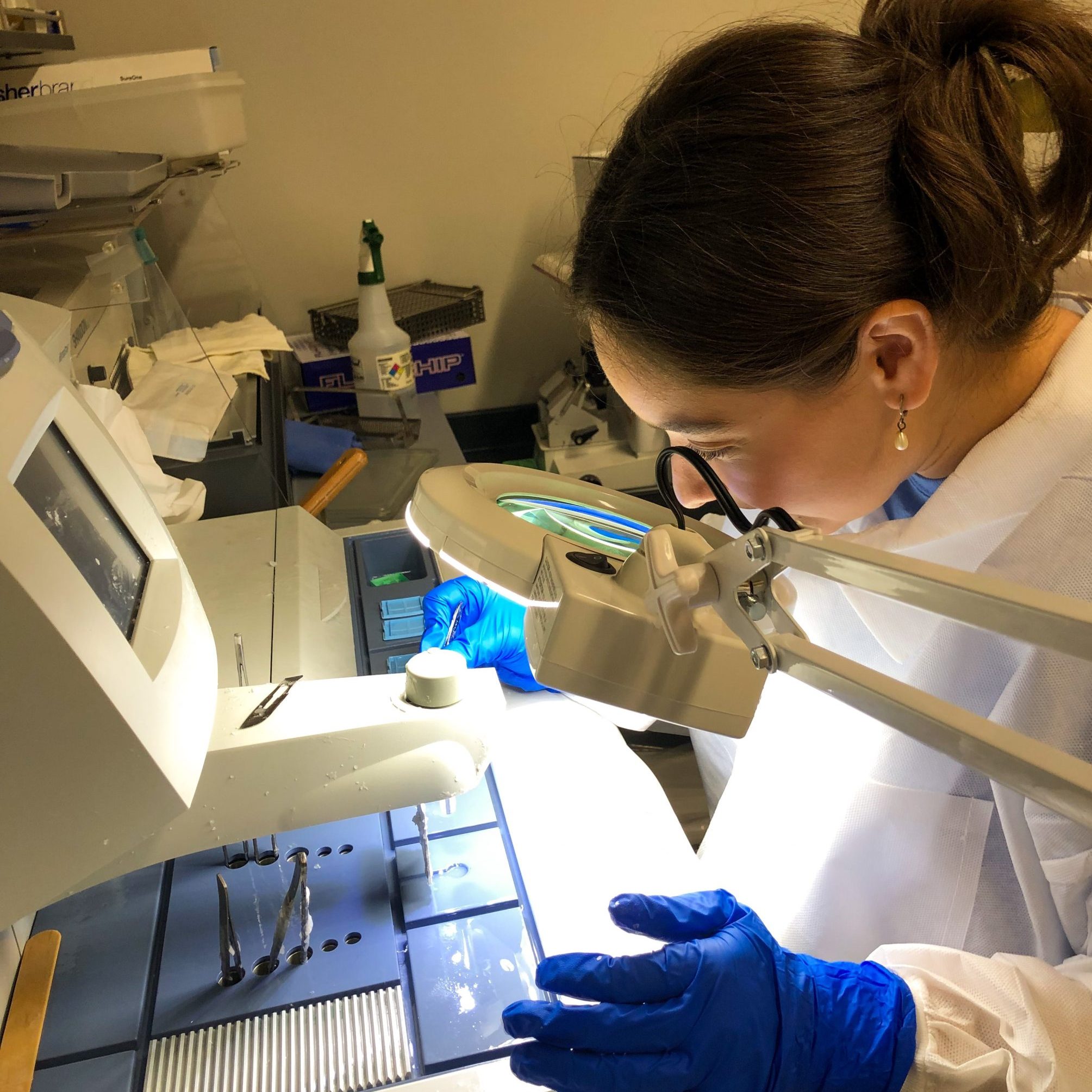
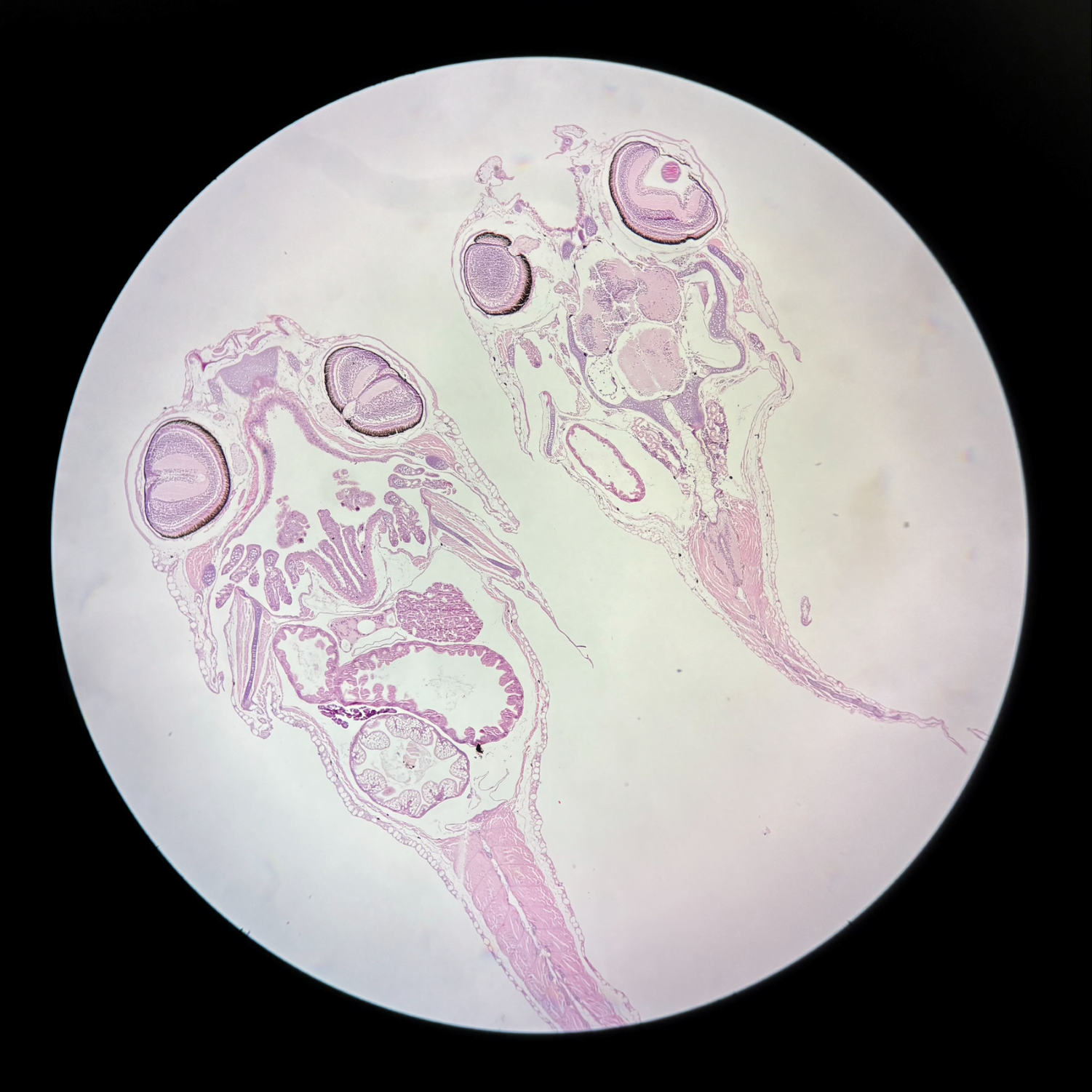
It’s been so exciting and rewarding to learn different lab techniques and skills and how they translate into my project! So far, I’ve been able to start taking a look at my lumpfish larvae samples that were histologically prepared and have identified what could be the thymus at 34 days post hatch. Additionally, with the help of the University of Maine’s DNA Sequencing Facility, I’ve been able to successfully confirm the identities of 3 reference genes and 4 of my immune genes and will soon begin my qPCR data collection.”
Michael Sabol, advised by Rosemary Smith
CORE Service: Micro- and Nanofabrication Cleanroom
“We are investigating memristors, a circuit component that varies characteristics depending upon its previous state. They have applications in energy-efficient memory. The construction of the device is a metal oxide layer with a non-stoichiometric concentration gradient of oxygen sandwiched between two electrodes.
For this project, our goal is to build and test a series of memristors to better understand their properties. Additionally, we wanted to try a liftoff technique, which we believe will increase yield from the last series of devices. The CORE voucher was very helpful in being able to test this new technique, which will be used again in the future.
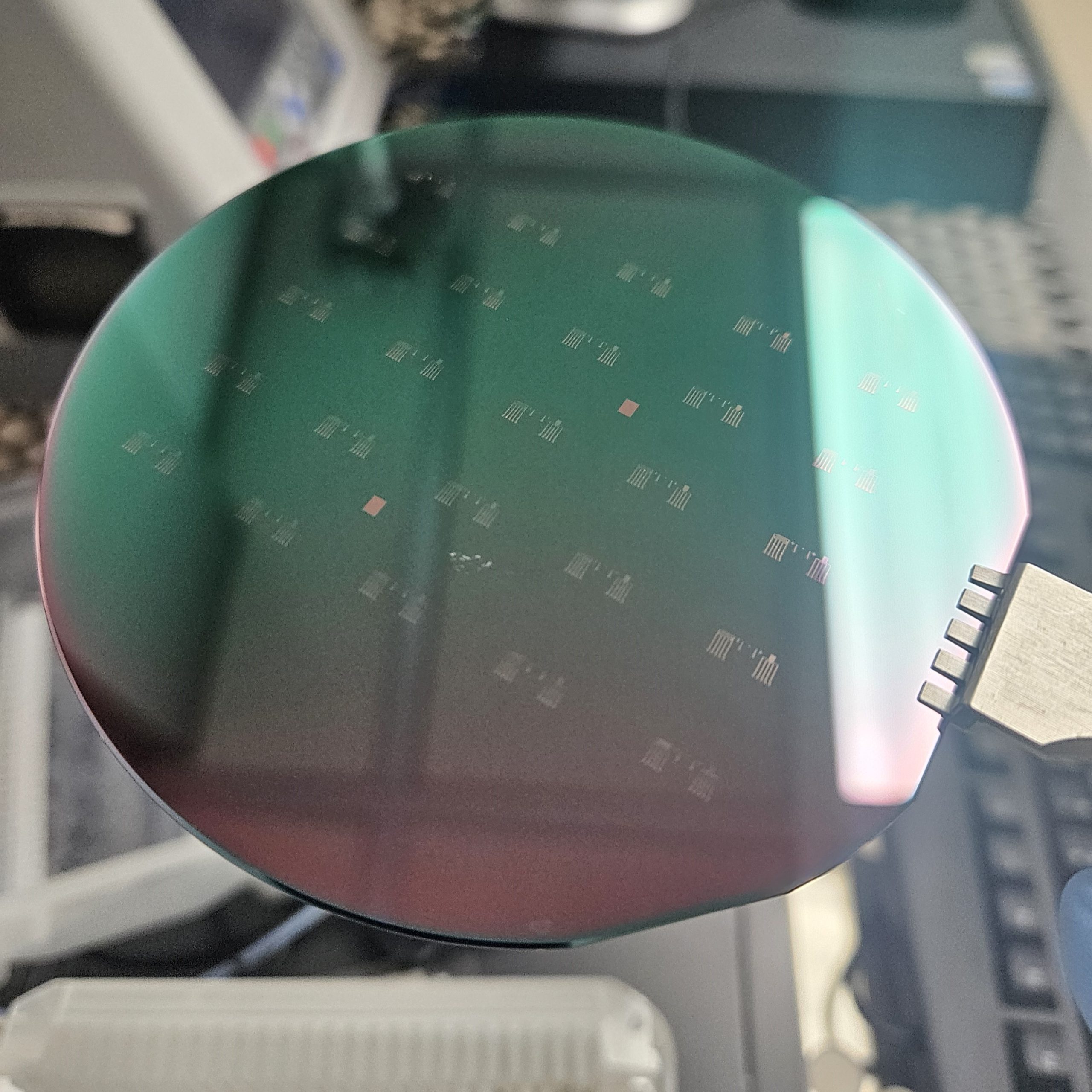
To start off, a blank wafer is coated with a LOR 5B resist mask layer and baked to harden. Then a photo active resist layer of AZ 1512 is spun on top. A mask of electrodes is then patterned on the photo active layer and developed through both resist layers. Then, gold was deposited on the whole wafer via the AJA sputterer. Finally, the mask is removed, leaving gold in the areas where it wasn’t and stripping the rest, creating the bottom electrodes of the memristors. Attached is a photo of the wafer after this process. The use of this bi-layer technique minimizes loss compared to wet etching, which is what was done before.
I am very appreciative to CORE and the Office of the Vice President for Research for running the CORE Voucher Program, as it allowed me to test this other process. It seems to work better than other methods tried before.”
Thank you to our voucher recipients for sharing their insights! The application for Spring 2025 CORE Vouchers opens on January 21st, and closes on February 7th. Find more information on CORE’s Support page.
